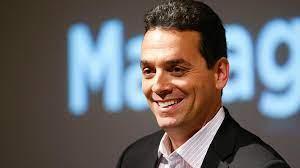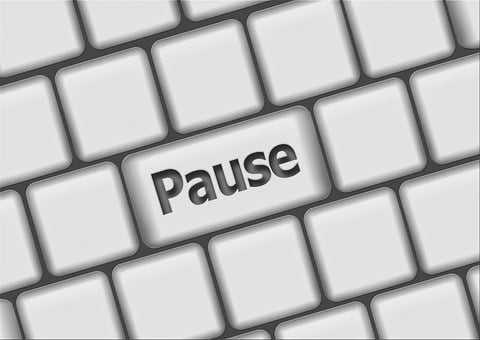Explore the World's Best Ideas
Join today and uncover 100+ curated journeys from 50+ topics. Unlock access to our mobile app with extensive features.
“I used to believe that timing was everything. Now I believe that everything is timing.”
DANIEL H. PINK
914
16.3K reads
FIGURE OUT YOUR DAILY WHEN
3 step process -
- Determine your chronotype: Lark( morning type), Owl (night type), or Third bird (in between)
- Determine what you need to do. Does it involve heads-down analysis or head-in-the-sky insight? Or are you trying to make a decision?
- Look at this chart to figure out the optimal time of day
966
9.58K reads
“The best endings don’t leave us happy. Instead, they produce something richer—a rush of unexpected insight, a fleeting moment of transcendence, the possibility that by discarding what we wanted we’ve gotten what we need.”
DANIEL H. PINK
825
8.81K reads
WHEN TO EXERCISE
- Lose weight: Morning exercise (after waking up) may burn 20 percent more fat than later, post-food workouts.
- Boost mood: Cardio workouts—swimming, running, even walking the dog— do it in the evening, you’ll end up sleeping through some of the good feelings.
- Keep to your routine: if you find yourself struggling to stick with a plan, morning exercise, especially if you enlist a regular partner, can help you form a habit.
- Build strength: Our physiology changes throughout the day. If you’re doing weight training, schedule your workout for those early-morning hours.
972
6.3K reads
IF YOU DON’T HAVE CONTROL OVER YOUR DAILY SCHEDULE
- Be aware: Simply knowing that you’re operating at a suboptimal time can be helpful because you can correct for your chronotype in small but powerful ways.
- Work the margins: Even if you can’t control the big things, you might still be able to shape the little things. If you’re a lark or a third bird and happen to have a free hour in the morning, don’t fritter it away on e-mail. Spend those sixty minutes doing your most important work. Try managing up, too.
814
5.22K reads
FOUR TIPS FOR A BETTER MORNING
- Drink a glass of water when you wake up.
- Don’t drink coffee immediately after you wake up.
- Soak up the morning sun.
- Schedule talk therapy, appointments for the morning.
877
6.75K reads
MAKE A BREAK LIST
Each day, alongside your list of tasks to complete, meetings to attend, and deadlines to hit, make a list of the breaks you’re going to take.
Start by trying three breaks per day. List when you’re going to take those breaks, how long they’re going to last, and what you’re going to do in each. Even better, put the breaks into your phone or computer calendar so one of those annoying pings will remind you. Remember: What gets scheduled gets done.
851
4.78K reads
TAKE A PERFECT NAP
- Find your afternoon through time: Around 2-3 pm (after ~7 hours of waking up).
- Create a peaceful environment: Turn off notifications, dim the lights, etc.
- Down a cup of coffee: The most efficient nap is the nappuccino. The caffeine won’t fully engage in your bloodstream for about twenty-five minutes, so drink up right before you lie down.
- Set a timer on your phone for twenty-five minutes: Most important - not more than 25 minutes!
- Repeat consistently
936
5.07K reads
PAUSE LIKE A PRO
A psychologist who studies extraordinary performers, Ericsson found that elite performers have something in common: They’re really good at taking breaks.
In Ericsson’s study, one factor that distinguished the best from the rest is that they took complete breaks during the afternoon (many even napped as part of their routine), whereas non-experts were less rigorous about pauses.
They practice with intense focus for forty-five- to ninety-minute bursts, then take meaningful restorative breaks.
You can do the same. Pause like a pro and you might become one.
907
4.31K reads
Four Situations When You Should Go First
- If you’re on a ballot (county commissioner, prom queen, the Oscars)
- If you’re not the default choice
- If there are relatively few competitors (say, five or fewer) - for the advantage of the “primacy effect”
- If you’re interviewing for a job and you’re up against several strong candidates, you might gain an edge from being first.
818
5.5K reads
Four Situations When You Should Not Go First
- If you are the default choice, don’t go first.
- If there are many competitors (not necessarily strong ones, just a large number of them), going later can confer a small advantage, and going last can confer a huge one.
- If you’re operating in an uncertain environment, not being first can work to your benefit.
- If the competition is meager, going toward the end can give you an edge by highlighting your differences.
820
4.93K reads
831
6.18K reads
IDEAS CURATED BY
A learner who loves to share wisdom on personal growth, happiness, and success on Deepstash. Topics include motivation, habits, goals, and mindset. Believes that everyone can achieve their dreams with the right attitude and action.
Suman Saha's ideas are part of this journey:
Learn more about books with this collection
The balance between personal and professional effectiveness
Proactivity versus reactivity
The importance of defining your path in life
Related collections
Discover Key Ideas from Books on Similar Topics
1 idea
How To Stop Being Lazy And Get More Done
bakadesuyo.com
3 ideas
This Is How To Increase Emotional Intelligence
bakadesuyo.com
4 ideas
Read & Learn
20x Faster
without
deepstash
with
deepstash
with
deepstash
Personalized microlearning
—
100+ Learning Journeys
—
Access to 200,000+ ideas
—
Access to the mobile app
—
Unlimited idea saving
—
—
Unlimited history
—
—
Unlimited listening to ideas
—
—
Downloading & offline access
—
—
Supercharge your mind with one idea per day
Enter your email and spend 1 minute every day to learn something new.
I agree to receive email updates









